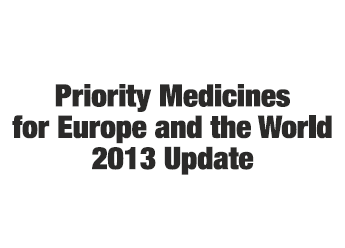
Tuberculosis accounts for the second most important infectious disease burden in Europe.
The 2013 Report Priority Medicines for Europe and the World provides a public-health-based medicines development agenda, based on a systematic methodology for this priority setting. It is an update to the original 2004 Report Priority Medicines for Europe and the World and takes into account changes in global health and pharmaceutical innovation since 2004 in order to better address current and future patient needs.
This latest updated report analyses pharmaceutical innovation from a global public health perspective for Europe and the world, based on the principles of equity and efficiency.
The 2004 Priority Medicines Report stated that “Tuberculosis (TB) is a major and growing threat to public health for Europe and the world, with new epidemiological challenges.” Since then, the incidence of TB and TB mortality rates have been declining both in the EU/EEA region and worldwide. TB remains largely a disease of poverty, with a high disease burden in low- and middle-income countries and in countries with high HIV prevalence.
The TB R&D landscape has changed over the past decade. Renewed interest from the pharmaceutical industry and public-private partnerships (many of which include pharmaceutical companies) have moved forward the development of TB diagnostics, treatments and vaccines. This has been driven by investments from the public sector, including EC-funded and philanthropic initiatives. In order to see these positive developments through, the current support needs to be continued. Investments in basic research, diagnostics development, novel pharmaceuticals and treatment regimens, and vaccines are essential in order to move towards TB elimination.
The report is available here (by chapter, pdf), or here (entire report, pdf).
Source: WHO